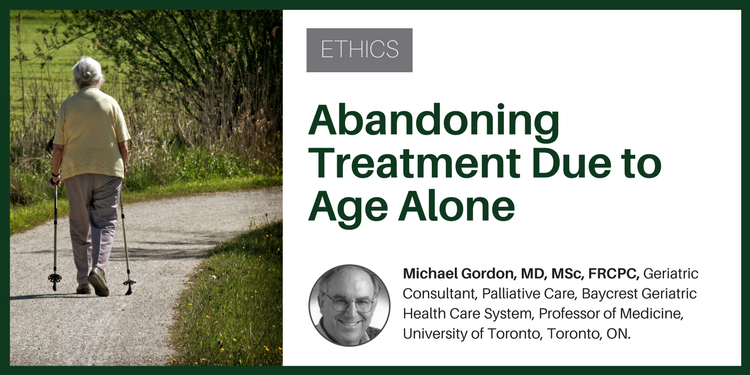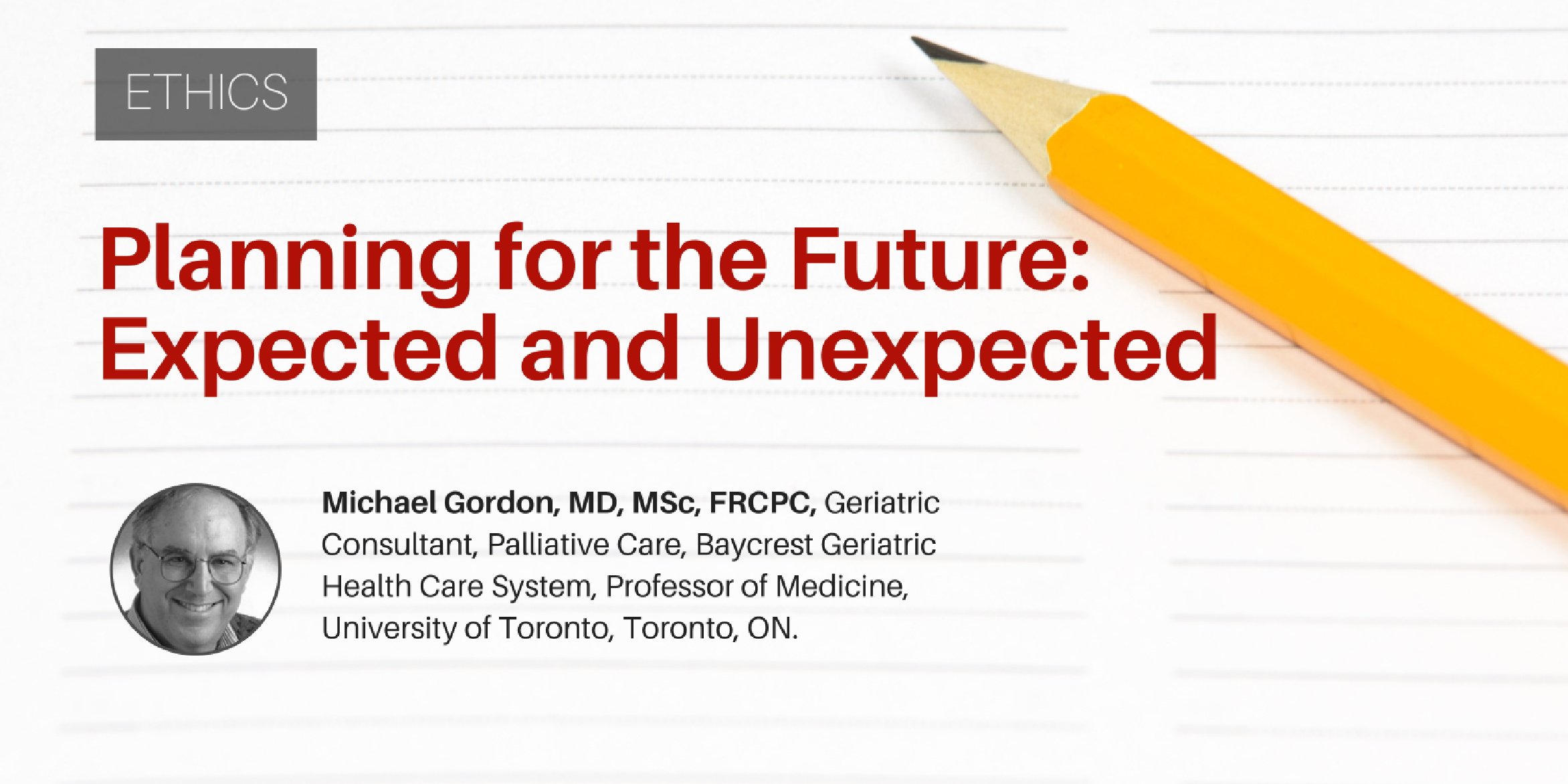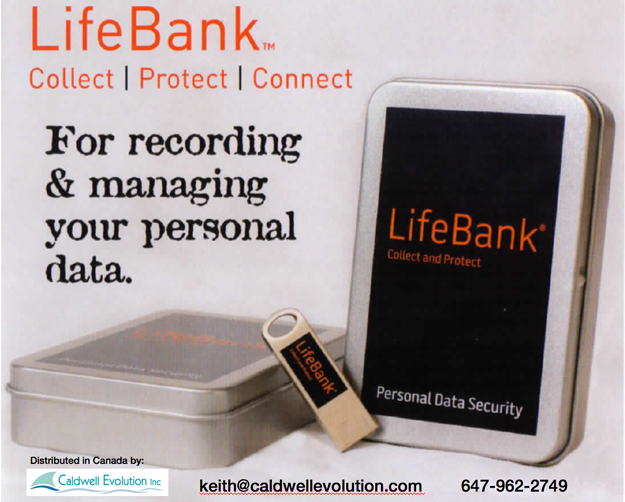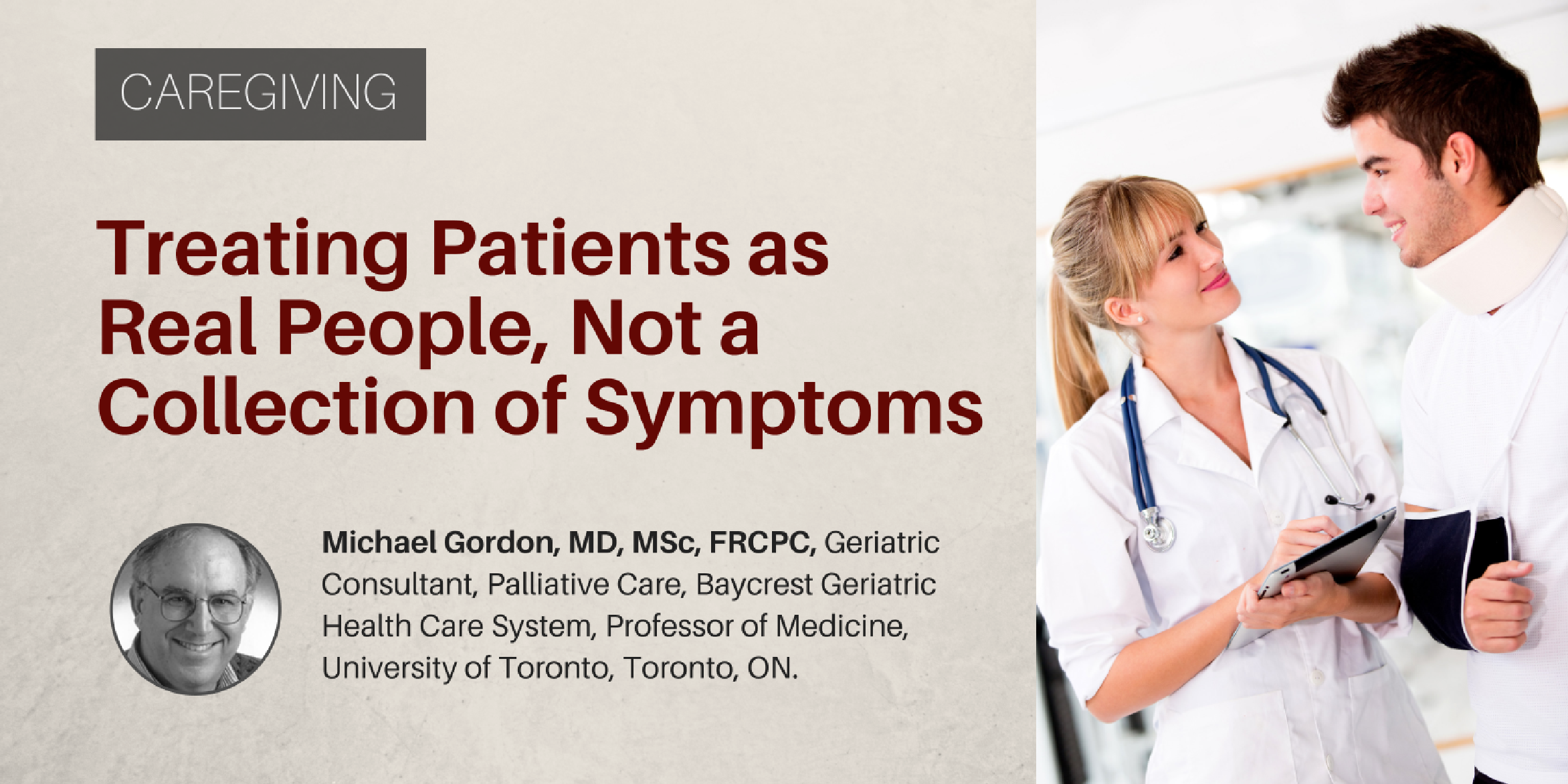RS Welcome to the launch of the Medical Narratives podcast with Dr. Michael Gordon. Your go-to source for discussions on important issues in medicine and stories from real patient-physician encounters.
My name is Regina Starr and I'm the Managing Editor for www.healthplexis.net and the Journal of Current Clinical Care, the home of the Medical Narratives podcast. I am pleased to introduce the host of Medical Narratives podcast Dr. Michael Gordon.
Dr. Michael Gordon recently retired after a fulfilling career as a geriatrician that spanned 56 years, 44 of which he spent working at the Baycrest Center in Toronto. He is Emeritus Professor of Medicine at the University of Toronto. Michael is a recognized ethicist and a thought leader on all topics of care of the elderly and end-of-life decisions.
Michael is also a prolific writer and a masterful storyteller. He is a regular contributor to the Journal of Current Clinical Care and he will be hosting his own channel within the soon to be upgraded Health Plexus where all of his work will be organized in a curated section.
I've had the privilege to work with Michael the past 10 years.
Hi Michael, I am so excited for the launch of this podcast. Congratulations on this new venture. Welcome.
MG Thank you very much for inviting me.
RS Pleasure.
Telling stories is your thing, so our listeners would be interested to know how you chose geriatrics as a specialty when as I understand, it hardly existed in Canada or the United States at the time you went into it.
MG Well I can say honestly that I didn't choose geriatrics. I've been asked this question many times, I could say that geriatrics chose me and it was like so many things in life, happenstance. I studied in Scotland where indeed we had a geriatrics as part of our clinical experience and I can say that two of my favourite clinician teachers at the University of Saint Andrews Dundee campus were in fact geriatricians. They were marvellous people and it was clear to me in my young medical student days that they were very caring people, but they were absolutely fabulous clinicians and I could say that I learned how to percuss a chest properly from one of them. He played the chest like a drum. So geriatrics found me and it was a collection of events that led me into the field and I wasn't planning to do it in any way, but when the opportunity came up I decided to take advantage of it and literally within a week of acting as a consultant to Mount Sinai hospital for patients potentially going to Baycrest for transfer I fell in love with the field and have been in love with it for 44 plus years.
RS Fantastic. Beautiful. In fact, Mark Varnovitski, who is the publisher of Journal of Current Clinical Care and www.healthplexus.net, he shared a story that he heard from another giant in the field, and another contributor Dr. Barry Goldlist, that you hold the number one geriatric specialty certificate in Canada. Is that true?
MG Well, it's true, but again like so many things it's not as if it was exceptional. I mean it wasn't planned of course, it was an accident of fate. At the time of the first exam there were only I think 10 of us eligible by the criteria and of course the criteria could not include formal training in geriatrics because that didn't exist in Canada and all the applicants as far as I recall none of them had formal training in geriatrics so we were you might say grandfathered in to just take the exam, a written exam, and an oral exam, and the person who actually examined me was a geriatrician, but from Australia and they already had geriatrics, but in any event we took the exam and when we got the Royal College certification there were only five of us who got the certification and as it turned out I was the lowest on the alphabet, G, and because I was the lowest on alphabet I got the first certificate. Well it sounds good, I mean it would have been one of the first five, but it sounds good and I know that my places of work love to say that I was the first certified geriatrician in Canada which happens to be the case, but not because there was something extraordinary about me the first five of us in fact were the pioneers.
RS Fascinating. In fact, my grandmother was the first geriatrician back home in Odesa.
MG Oh really.
RS Yes.
MG How about that.
RS And when she came to Canada, she volunteered at Baycrest for many years.
MG Oh I didn't know that. Isn't that wonderful.
RS So there you go, we have a connection.
MG Yes, well I always say, you have to be careful about making connections and sometimes when I'm talking to people because I like to hear their stories, I say we're going to stop now I can't afford another relative.
RS Well my grandfather on my mother's side came from Latvia with the last name Gordon.
MG Wow, then we really are.
RS So maybe we are Michael.
MG Because those that came that my grandparents came from Lithuania and of course Lithuania Latvia are neighbours and the name was an actual Scottish name that was adopted by Jews who lived in the shtetl Aniksht was named and they took the name because Peter the Great, boy it's in terms of current history, Peter the Great hired a Scottish mercenary by the name of general Patrick I think Patrick Dennis Gordon who fought for him he was in those days mercenary troops and at the end of the wars in the Baltics. People took the name Gordon when they had to during emancipation and they did it because general Gordon became a favourite of the Czar and it was a way of honouring the Czar and I when I lived in Scotland and studied there I tried to look it up and I found the reference to that story. In the history book of Russia and my grandfather when I asked him I was about I don't know 11, 12 years old what was our name before? he said before what? I said well before it was Gordon because most of my friends had names that were changed from Aski and Ozovitz and whatever and he said my great grandfather was a Gordon so it's always been Gordon.
Wow. So maybe indeed you have to find out because if it was Latvia and Lithuania I mean it was walkable almost.
RS Yes maybe we will. I'll ask my mom about that.
MG Yeah.
RS So I want to ask you, we just lived through two years of a global pandemic yes before the pandemic the medical profession was revered, however, during the pandemic we saw the mental, the physical stress, the amplified dangers for healthcare professionals who were on the front lines. Do you feel that the pandemic may have somewhat dulled the attraction of medicine as a profession for young people?
MG Oh the pandemic is so complex and you know it's funny I always say to people I'm not a spring chicken. I've been through in my teens, the polio epidemic and I remember as a teenager in my neighbourhood we all wore camphor around our neck. When I tell this to people they laugh. You say why camphor? The whole place smelled of camphor we you know spelled of camphor. It's because it was thought that camphor would keep the virus away. Remember the virus this is early days of pre- virology so we walk camphor and I mean you go to them if we went to the movies which was not something you did lightly, all the newsreels showed people in respirators, iron lungs in gymnasiums, in amphitheaters, because there were so many of them and then of course when the vaccine came out first salk and then sabin it it just changed the world, it changed the world, and then I also lived through a couple of influenza epidemics, the H1N1, and the Asian it was called of course the Asian flu and I was a teenager and I was uh no I was a sorry I wasn't a teenager, I was a young adult, no no I was a teenager, and I stayed at a friend's house because my mother was working and I was really sick I was like in bed for 10 days. So I've been there and because I'm old enough I've watched various infectious diseases.
I can remember whooping cough cases and it was awful. Anybody who says that they don't believe in vaccines, to see a child whooping is painful. So the pandemic changed many things in medicine. I mean the fact that they were able to turn out a vaccine in such a short time is really a miracle of modern virology and vaccine chemistry. It was unbelievable because usually it takes years. What we learned, many things we learned, but what we learned in the field of aging was that in a particular those in long-term care facilities nursing homes and retirement homes suffered especially not just because they were prone to getting the infection and when they did they often got very ill and died, but the places they lived seem to be almost facilities that caused the spread of the disease as if it was an incubator. I mean these people were living in a common space, the healthcare staff were stretched, many of them knew very little about proper precautions. I mean precautions for infection have always been a challenge to especially nursing and just watching somebody and I remember the SARS outbreak because we were closed down at Baycrest. All the hospitals were closed down, is watching them getting in and out of their gowns and their masks and their helmets and whatever is really quite a strain. So that the older individuals in these facilities really suffered, but the main thing besides the illness, which was real, and a high death rate, and I experienced this also on a personal level was the sense of isolation. Isolation, loneliness, depression, people couldn't visit. I can remember visiting somebody who I know very well and she was looking out the window of her apartment in a retirement home and we were looking up and waving and it was like some of the television programs that showed and it was painful because not only could she not see her family, within the building they decreased congregation, meals. I mean it really was when you think about loneliness is a terrible thing and we know in even in Britain they sort of started a I don't know if it's a regulatory committee or something to deal with loneliness, legislation to deal with loneliness because that becomes part of the epidemic of Covid, but any other illness that affects the risk of people living in congregate dwellings.
RS Yeah, it was very difficult the past two years and we have aging parents, the same thing we weren't able to see them. The grandchildren weren't able to see their grandparents. Very difficult.
MG Yes, I know this one person who actually had a couple of grandchildren, no great-grandchildren, births of their grandchildren, could not see them until they were almost six months old. You know I mean they got pictures and you know nowadays you can take a picture anywhere in the world. They got pictures, but that's not the same.
It's not the same. Of course the Zoom meetings and the you know, thankfully the technology was there the past two years because we obviously 1918 was different, but it's not the same, the human contact, seeing people, hugging, it's just not the same.
Yes, no hugging. I mean it's funny I've become used to Zoom, almost everybody's had to and I know many of my colleagues, especially at Baycrest, but elsewhere I'm sure, you know try to do their medicine over Zoom. Some of it can be done. Certainly the talking part.
RS Yes, but how do you diagnose an internal bleed over Zoom?
MG Well that's hard emergencies are hard and for emergencies the fact is you got to get dressed up in all that paraphernalia and anybody who worked in the emerge or the ICU knew you looked like you were going to outer space.
RS Yes.
MG And it's funny because I was a lover of the, even though I know a lot of people criticized that, Grey's Anatomy it was really up-to-date when they got to the Covid epidemic, they were all in spacesuits. Yes, well it's hard to be personal in the spaces I mean I find that even with masks and I'm pretty good at recognizing people just from their eyes, but sometimes that every now and then you see somebody you think I know you who are you and then they take off the mask say oh and you know it's very hard to develop you can't see facial movements. For people who, for example, are hearing impaired people don't realize that all of us do some lip reading, it's automatic. Anybody with any hearing impairment does a lot of lip reading so if you've lost the lip reading ability because of a mask and you're hearing impaired and you're not wearing it I can tell you hearing aids are sometimes very difficult to accommodate to. They can be a mixed blessing, background noise, whistling, and you know I have a lot of older people that it was a real struggle. One to get them accept the hearing aid and then to use them, even though we know that hearing aids are good for you, especially if you've got cognitive impairment. They enhance the ability to understand. I used to say when I was negotiating with a patient who didn't want a hearing aid, I'd say you know if you don't hear it, you can't remember it, and I've seen people who in fact when they did finally have some hearing augmentation, their memory impairment became less severe.
RS Right, so tell me, would you recommend to a young person to go into medicine today?
MG Absolutely, I'm a great proponent of medical careers. I think medicine and it's not fair, I know people who love the law, and love engineering. My father was a fabulous engineer and I learned a lot from him. I even went to an engineering high school because at one point I wanted to do engineering, but medicine is the most satisfying profession one could imagine and I know people who don't like it for various reasons, but if you're interested in people and I'm not just talking about altruism. I mean people say oh I just want to do good. Well sometimes medicine is not so dramatic. I mean saving a life is something special and I can remember the first few cases when I walked out of a you know hospital room thinking I saved a life and I could remember in Scotland the first diagnosis of meningitis I made in a infant. It was not a very fancy hospital it was simple, but I looked down the microscope while this stuff was being this central spinal fluid was being cultured I looked down, I did a gram stain, and there they were and I think it was H. influenza and in those days the antibiotic we use was Chloramphenicol. Now you can't use and Chloramphenicol for all kinds of reasons, but that's a whole other story. But I can remember walking out of the ward and say my G-d, I saved the baby, I saved the life. So medicine is marvellous. It's marvellous for the excitement of medicine, but the best part of medicine is people. The people you meet, the people you remember, the people you talk to, the stories you hear. I'm a big believer in stories.
I'm a writer as a I can say another profession. I love stories and I grew up with a grandmother actually we didn't have a lot of money so I shared a bedroom with my grandmother from Lithuania and my sister and a pet white rat and my grandmother told me stories and I heard all these stories about her growing up because she came to America in her mid-teens. Growing up in Lithuania having Russian cossacks coming through the village and killing people and her hiding in a potato cellar and I heard stories about the early days in the garment profession in New York and that terrible she was a witness to the triangle fire, where the seamstresses were locked into the factory and died. I mean it was marvellous stories and I've always been interested in stories and anybody who knows me, knows they have to be careful of course if they ask me to tell them a story what they're gonna get is a story, and my kids I mean they're I have wonderful children and sometimes you know I'll be telling them something and they say oh dad I know, I know, and I once had a conversation with my eldest daughter of my second marriage, Talia, who by the way is studying to be an anthropologist. Well she is because she has her Masters, but she's doing a PhD and I was telling a story, we're actually on a road trip but I was telling you a story started she said dad I know, I said you know my telling a story isn't so much that you don't know it, but it's important for me to remember it because that story is meaningful for me and sometimes I'm you know watching a movie I'll be asked if I like the movie and I'll say yes and the person says well it wasn't a very good movie I said, but it was for me because it brought back memories. It brought back stories. I made reference I know I can tell what a good movie is, but if the movie happens to take place, for example, in Scotland I enjoy it just by listening to the accent, you know. So I love stories.
RS True, true I do too and I guess that's another thing that connected us. I enjoy your stories and reading your narratives every month. So tell me what are your plans for the podcast? What topics do you think you'll cover?
MG Well, you know there are so many topics one could talk about. First of all, the great thing about geriatrics which is one of the reasons I enjoyed it, separate from the people business, is geriatrics has everything that internal medicine has. That's why you have to do internal medicine first. I mean it's a long haul, it's as long a haul as respirology, cardiology, whatever because you have to do your internal medicine so you have to know your internal medicine and then you do the geriatric component, but the patients you're seeing in a sense you know as a cardiologist and you see old people they have hearts so you've got geriatric cardiology, but in geriatrics you have geriatric everything. They have liver disease, they have GI disease, they have abdominal disease, and the real challenge is understanding the whole of internal medicine with the special components and nuances of geriatrics. I mean examples like and I've seen these cases. I feel sometimes like Jimmy Durante, I've got a million of them, I've got a million, stories of somebody who's come in you know who's a bit confused and they have mild dementia, but they get very confused and I used to see this a lot at the General Hospital I worked where the nurses would say post-operatively, oh mr so-and-so is confused they had a surgery, they must have had a stroke, and my little dictum when I'd see, no you have to think they didn't have a stroke what else could they have that makes them confused. Well one of the most common I mean this is bread and butter geriatrics is they have an infection, a post-operative infection. The only problem is they may not have a fever, in fact, what they may have is only confusion, a dropping blood pressure. So you have to understand the nuances of, for example, infection in the elderly and I mean I've seen so many cases of older people with conditions that are easily missed because the symptoms are not I mean it's known that older women, women in particular, but older women often have heart attacks without manifesting the typical symptoms. So you have to be aware that any change in mental status might be the caused by some medical condition which the condition itself is common, but the presentation is uncommon. So you know, it's such a broad field that it's absolutely marvellous to contemplate it and the learning of geriatric components of internal medicine, nuances of internal medicine, are just challenging and wonderful and satisfying.
RS Do you plan to invite any guests on your podcast?
MG Yes, I would be happy if there was an opportunity to speak to somebody, either within the field of geriatrics or within the field of family medicine with a large patient population of older people and in the real world not unless something special happens, we're not going to have enough geriatricians to look after all the older people, it would be impossible, and I'm not sure it would be a good use of the resources because family medicine especially if somebody's taken the special extra year of care of the elderly gives them the ability to do most of the important work in the care of the elderly and the geriatrician could be the person who's a resource for program development, for educational programs, and to help family physicians including those with care of the elderly expertise to help solve some of the problems, and some of the problems are not purely medical problems, they're psychosocial problems. I know I've heard this from doctors I've worked with over the years, they get upset with families, you know that are asking too much, or asking too many questions. Isn't part of their repertoire and it's something I have to learn as a care of the elderly doctor as you have to ask what you may think is a very simple question to answer, but it isn't I mean most people don't know I'm dealing even as a family member with issues related to family members that have problems and I hear family members talk oh they've had this, they must have had that, and I have to be very careful because you don't want to get into family dynamic conflicts. To say well you know in my experience and whatever, but you know that's the story so as a geriatrician there's a lot to offer to the patient population, to the medical health care population and I know that in my career one of the things I love to do is teach and especially teaching non-medical people. I did a lot of in-service in various organizations for nurses. I have an interest in ethics so I also can bring that to the table because a lot of the problems that come up in the care of the elderly are what we call ethical. What's the right thing to do, conflict over decision-making, who's in charge of decision-making. I mean these are conflicts complex issues, but they're very important.
RS True and how often do you plan to drop these episodes?
MG I have to see how much energy I have. My commitment initially is every month, if I find that I can get all my resources together, I might do it every two weeks. It's you know it's demanding. I like it, but it still takes energy and creativity to do it well.
RS Of course, I know that you are an accomplished author of a few books. If you recall a few years ago we reviewed Parenting Your Parents.
MG Yes
RS Excellent resource for families with aging family members. Are you currently working on another book?
MG Well as we say in the Catskills, funny you should ask. Well actually because I've written so many narratives pieces on medicine, ethics, social medicine issues, personal, human issues, and a lot of them were published in the Health Plexus Journal of Clinical Care as well as other journals. I decided to try to pull them together as a compendium of articles and �I fortunately found a lovely student to help me. He wants to study medicine, but this was an opportunity to get involved with editing and organization he says he's learned a lot of medicine from it, that wasn't the plan, but he's a lovely guy and i'm putting together these articles together into a book. It's not quite a memoir. I wrote a memoir called Brooklyn Beginnings a Geriatrician's Odyssey which actually is being updated as well, and I hope to have this new book out. I'm waiting for some final issues to be resolved, but I hope to have it out certainly within this year and then I'm working on my previous three most recent books which was Brooklyn Beginnings a Geriatrician's Odyssey. Late Stage Dementia, which is a book to help clinicians and families deal with the end of life and the end of activity with people who suffer from dementia Alzheimer's disease etc. and then another book which actually I've just finished rewriting and I've submitted to the publisher they did the first edition it's called Moments that Matter and this I decided since I was interested in ethics and often when you're talking to families you try to bring an ethical concept because most people in quotes "want to do the right thing" and as soon as you say the right thing it's not just a clinical right, it's a right that makes them feel that what they've done has been the proper thing for their family member. So I wrote that one and it's just in the process of being reprinted as a new version and so I got a lot on my plate over the next I'll say six months to a year, but I hope that my new book, my latest book will be out by the end of the year.
RS Excellent. Look forward to that. I can attest I have read every single medical narrative and some days I feel like I could become a doctor.
RS So my last question. I know that you have a lot to share with our listeners in your upcoming episodes, however, just to give a quick sample of what to expect, what advice would you give to somebody who is caring for an aging person, a relative with many co-morbidities, even possibly dementia?
MG There are many, many issues. I think that one of the most important and I've written about this and you've read it. I call it having the conversation and I actually went through it with my late father. Having the conversation which means actually discussing openly, not by nuance, not by beating around the bush, what is it that no not everybody knows the answer to their own wishes what would you like if and I know people say oh we can't talk about it it's too morbid. Well it's not morbid until the time comes when you have to make a decision and sometimes children say well I don't really know, I don't know what they want, and I just went through this I just redid my advance directive with my lawyer, but I was just tuning it up a bit, but the idea that you want the person and my family certainly knows, to understand what they would want if, and the ifs can be many. You can't imagine what's going to happen, you know you say well you know when I get old enough I'll die, yeah and if you break your hip and can't walk anymore then what? Does that mean you'll be allowed to die, you'll be in a nursing home, you want rehab, you want to be at home? What about, I have one little scenario anybody who's worked for me says well what if you can't eat anymore? Well you want us to put a feeding tube in you? No, I don't want a feeding tube. So well what do you want? I want to eat, but what if you can do because it's dangerous and they say well if that's the case maybe I'd rather die, and I'll let the family listen. I said listen you have to understand because the person may not be able to make a decision at that time and you the family member becomes the decision maker. So having the conversation and I had it I can remember with my late father after my mother died because the fact is she had a terrible death, unexpected, with all kinds of side effects and we had to decide in many ways on the spot and when my father became ill and my sister who was wonderful looking after him, we had to decide because he got sick and he was going to be going up to the ICU and my sister said you know when they said what do you want to do and she said everything and I said wait that's not what he told us. Remember what he told us and we were able then together say no let's do this and this and if he has a cardiac arrest that's it because that's what he told us and you want to know that without feeling guilty. Anyway, I think that's a whole area of proper conversation and that would be one if there were somebody else who wanted to participate I'd be happy to, if people wanted to send in questions to be posed to me. I'd be happy, however, it works, but the issue in the subject is very important.
RS Yeah for sure and we will dedicate an episode just to these questions because they are so important. So that brings us to the end of this podcast.
Thank you so much for listening. Thank you, Michael. Please consider giving us your reaction by pressing the applause icon. Feel free to post comments or your questions to Dr. Gordon in the comment section below and press the follow button to follow Dr. Michael Gordon. Thank you so much.



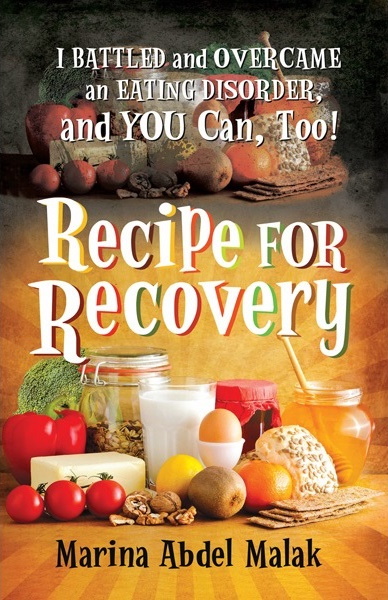
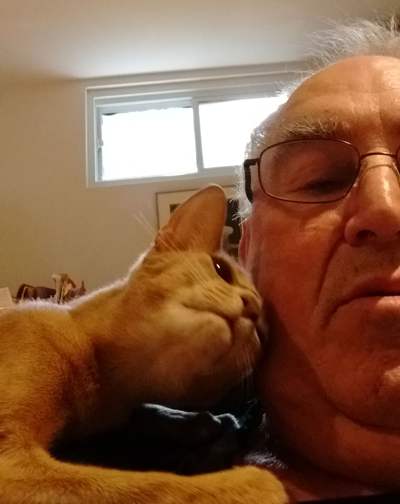 For the 6 months that I have not been able to drive because of medical reasons I have become a regular user of Uber. I find Uber more flexible and convenient than standard taxis. As regular users of Uber services know, many of the drivers are originally from elsewhere, by which I mean overseas and came as immigrants or refugees.
For the 6 months that I have not been able to drive because of medical reasons I have become a regular user of Uber. I find Uber more flexible and convenient than standard taxis. As regular users of Uber services know, many of the drivers are originally from elsewhere, by which I mean overseas and came as immigrants or refugees. The driver and I talked about the wonderment of cats and how they are part of Istanbul life. To observe the seven cats and their litters featured in the movie was a real joy, with the film starting with a picture of kittens waiting for their mamma to return with breakfast—their tiny heads peering through the railing surrounding the birth site. The clips of the cat who ventures to the fish market every morning where the local fishmonger prepares the remnants of the carved fish for the dependable visitor as if it were a guest coming for dinner. Among the most moving scenes were that of people whose lives were either impacted or even saved by their feline companion who through the special sense that cats have of responding to human need.
The driver and I talked about the wonderment of cats and how they are part of Istanbul life. To observe the seven cats and their litters featured in the movie was a real joy, with the film starting with a picture of kittens waiting for their mamma to return with breakfast—their tiny heads peering through the railing surrounding the birth site. The clips of the cat who ventures to the fish market every morning where the local fishmonger prepares the remnants of the carved fish for the dependable visitor as if it were a guest coming for dinner. Among the most moving scenes were that of people whose lives were either impacted or even saved by their feline companion who through the special sense that cats have of responding to human need. 